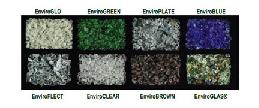
Yes, KERS has struck again! And this time, it’s not at all related to Formula 1 racing. Rather the exalted Porche 911 is making the news now with its next generation conception to be infused with Kinetic Energy Recovery Systems. Though certainly not the first road vehicle to utilize regenerative braking, this development will certainly accentuate upon the performance and efficiency of the 911; if not its classy élan.
For those who are new to KERS mechanisms, they are simply definitive automotive systems that propagate the recovery of the kinetic energy of a moving vehicle under braking. This recovered energy is then stored in a reservoir (either a flywheel or a battery) for later use under acceleration. Now, KERS can also be argued as a part of green technology since the mechanism utilizes the basic physical component of mechanical energy for drastic enhancement of vehicle performance, both in the terms of its fuel efficiency and overall speed, but with much lower emissions.
In case of the Porsche 911 series, the German company will use the more effective flywheel system while adding 4 inches to wheelbase length and 2.75 inches to the total vehicle length. The 991 911 Carrera is expected to have 350 horsepower from a smaller 3.4-liter flat-six engine, while the KERS component will seriously enhance car’s acceleration figures from the current 4.7-second 0-to-60 time of the 997 911 Carrera.
Moreover, the 911s are also expected to shed their weight by up to 100 pounds with the incorporation of more sturdier, yet lighter vehicular materials.
Via: AutoBlog




